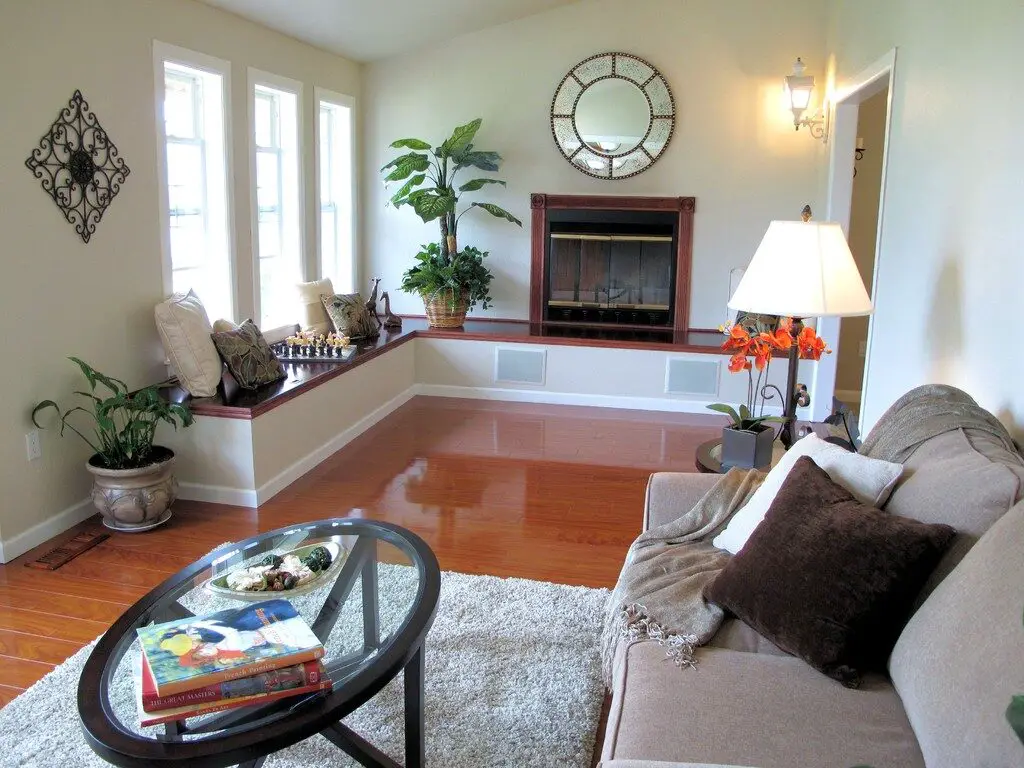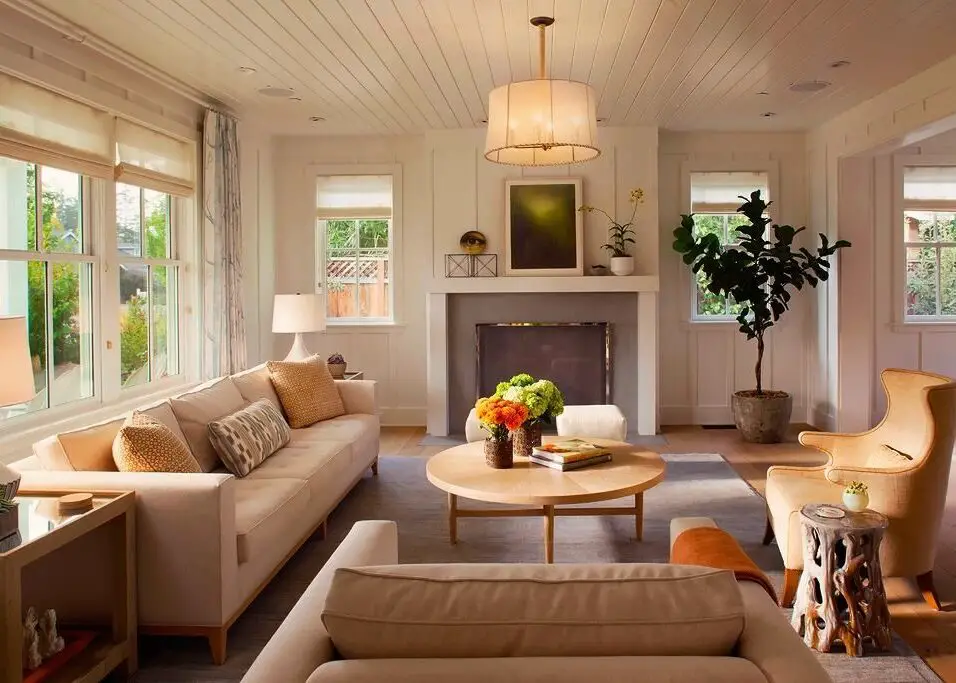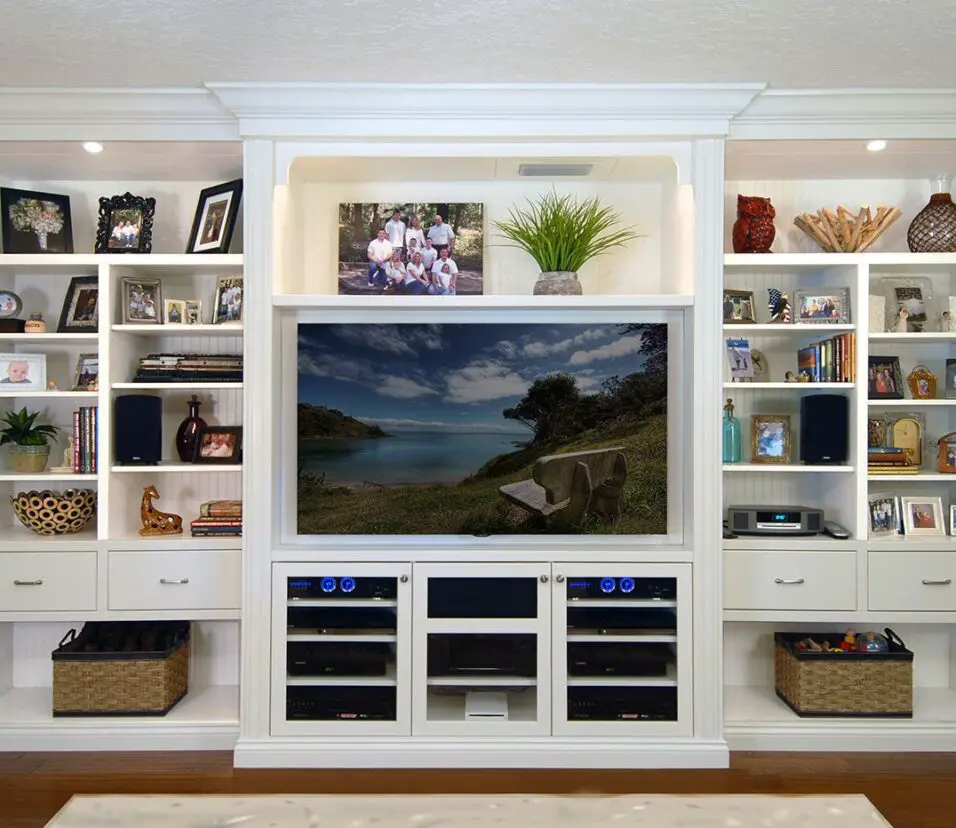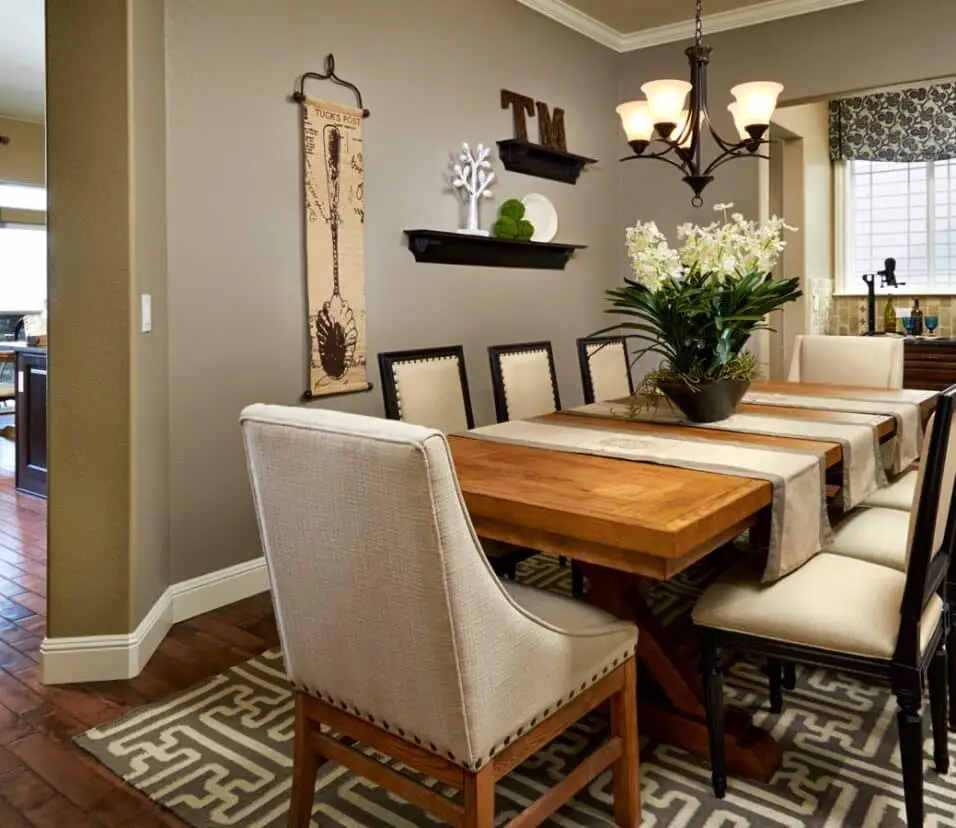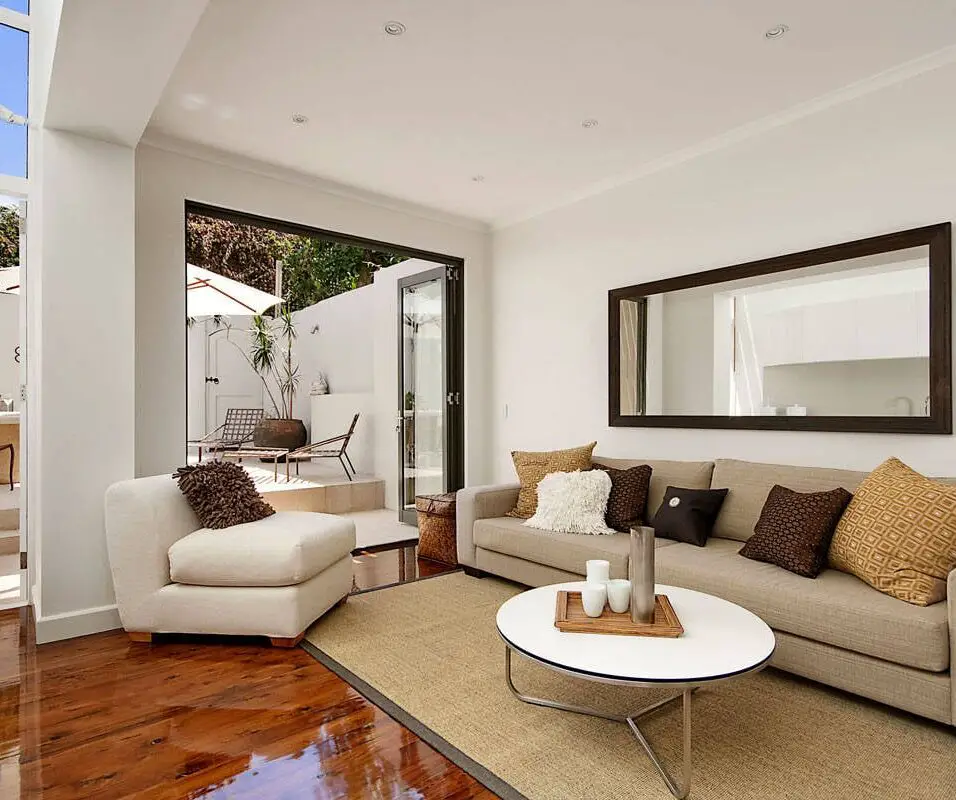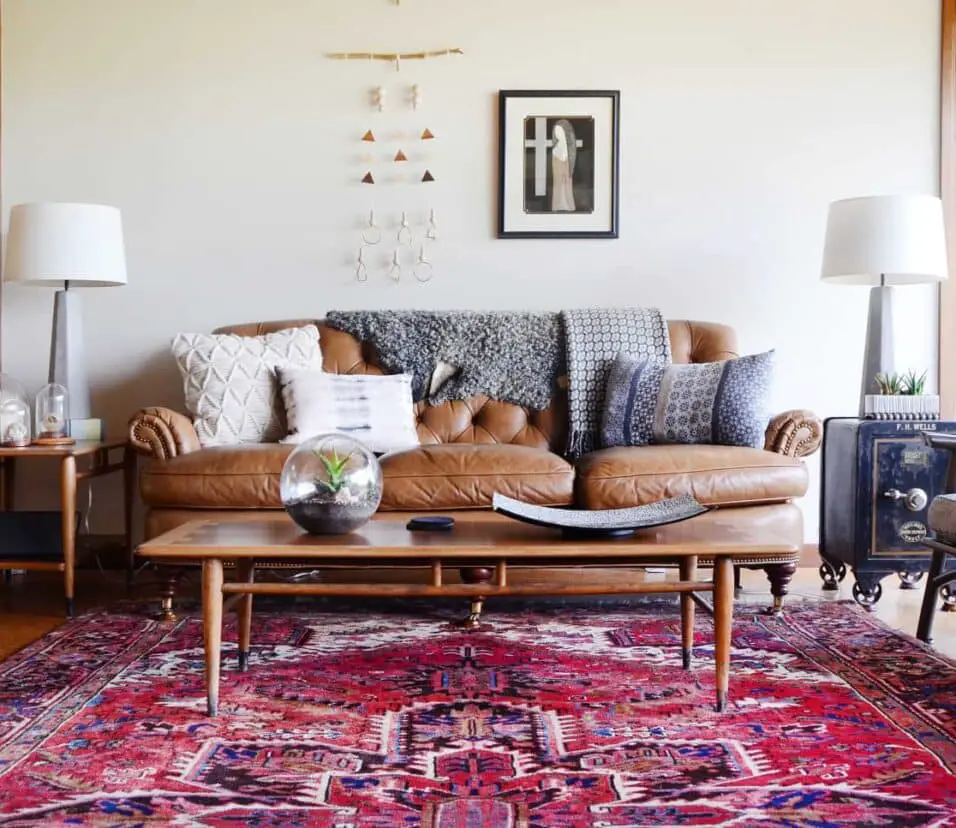How To Arrange Furniture In A Long Narrow Living Room
Introduction
How To Arrange Furniture In A Long Narrow Living Room: The key to creating a harmonious and inviting space lies in understanding the proportions and flow of the room while maximizing its potential. Whether you’re looking to make the most of limited square footage or seeking ways to enhance the room’s natural charm, we’ve got you covered. In this guide, we will explore clever tips and tricks to arrange furniture in a long narrow living room, ensuring a balanced and aesthetically pleasing environment where style and practicality effortlessly intertwine.
Determine the room’s focal point, which could be a fireplace, a large window with a beautiful view, or even a prominent piece of artwork. Arrange your main seating area to face this focal point, as it helps anchor the room and draws attention to its best features. There are several layout options for a long narrow living room. One popular approach is the “floating” furniture layout, where you place the furniture away from the walls and create a living room central area in the room. This technique can make the room feel more open and spacious.
For the main seating area, consider placing the sofa along one of the longer walls. If the room is exceptionally long, you might place the sofa closer to the middle of the room to create a more balanced look. Add a couple of armchairs or a loveseat across from the sofa to complete the seating arrangement. It’s crucial to maintain a smooth traffic flow in a long narrow living room. Ensure there’s enough space between furniture pieces, allowing people to move comfortably through the room without feeling cramped.
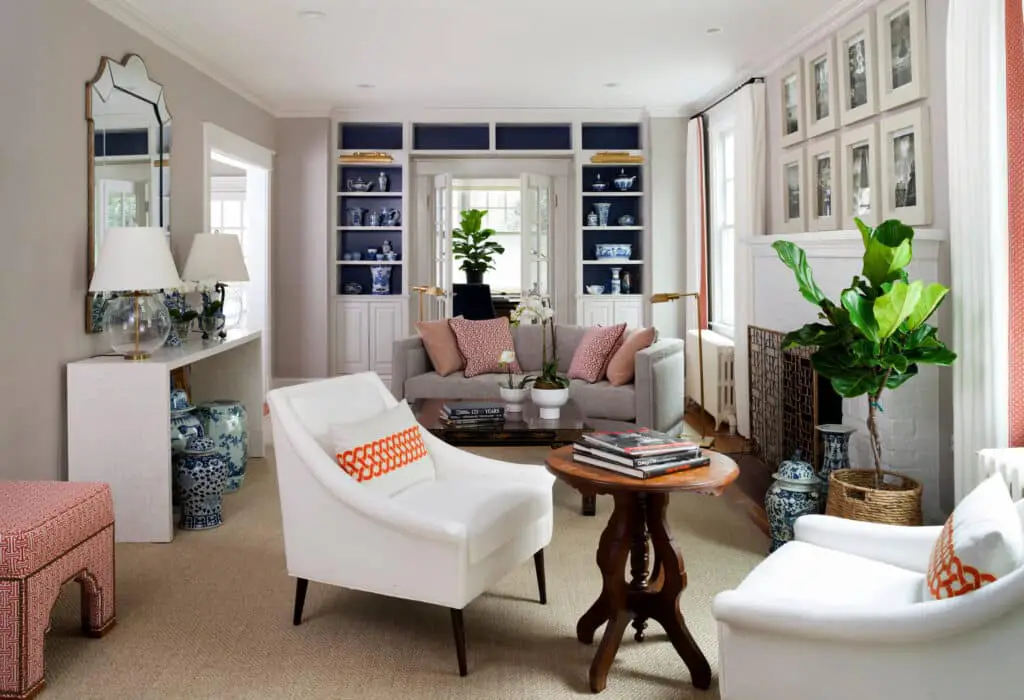
How to furniture a long narrow living room?
5 Genius Ways to Arrange Furniture in a Long, Narrow Living Room
- Create Separate Zones.
- Alternate your Furniture Groupings.
- Arrange Things Across the Space.
- Work with the Middle.
- Utilize an L-Shaped Sofa.
Before diving into furniture arrangements, consider the different functions you want your living room to serve. Common zones include seating areas, entertainment spaces, and possibly a reading nook or workspace. Clearly defining these zones will guide your furniture choices and layout decisions.
One effective approach for long narrow living rooms is the “floating” furniture layout. Instead of pushing all the furniture against the walls, create a central area where furniture is arranged away from the walls. This technique opens up the room, giving it a more spacious and balanced feel.
When selecting furniture, opt for pieces that suit the scale of your room. Avoid oversized furniture that overwhelms the space or long, bulky sofas that accentuate the narrowness. Instead, consider sleek and low-profile furniture that keeps the sightlines open.
The placement of the sofa is crucial in any living room. In a long narrow space, it’s best to position the sofa along one of the longer walls. This helps elongate the room and creates a natural flow. Place a coffee table in front of the sofa to anchor the seating area.
To draw the eyes upward and add visual interest, utilize vertical space effectively. Install floor-to-ceiling curtains or drapes to give the illusion of taller walls. Tall bookshelves or vertical artwork can also enhance the room’s height and make it feel more proportionate.
If your long narrow living room allows, consider creating multiple seating areas. Dividing the space into smaller conversation nooks can make the room feel cozier and more intimate. Use rugs or different flooring materials to define these distinct zones.
How do you balance a long narrow living room?
A long narrow room can be a bit tricky to furnish so here we have a few simple suggestions to make the space feel more balanced.
- 1 – Create a walkway.
- 2 – Don’t position all your furniture against the long walls.
- 3 – Create zones.
- 4 – Use the height of the room.
- 5 – Bring in circular elements.
The first step in balancing a long narrow living room is to clearly define different functional zones. Determine the primary purpose of the room, whether it’s for entertaining, relaxation, or a combination of activities. Create distinct zones for seating, entertainment, and any other activities you wish to accommodate, allowing each area to serve its purpose effectively.
When it comes to furniture placement, the “floating” layout is particularly effective in a long narrow living room. Instead of pushing all furniture against the walls, arrange key pieces away from the walls to create a central area. This approach opens up the room, making it feel more spacious and balanced.
The sofa is the focal point of most living rooms, so its placement is crucial for achieving balance. In a long narrow space, position the sofa along one of the longer walls to visually elongate the room. Consider placing a coffee table in front of the sofa to anchor the seating area and create a cozy and inviting atmosphere.
Make the most of your room’s vertical space to create a sense of height and visual interest. Hang floor-to-ceiling curtains or drapes to draw the eyes upward and make the room appear taller. Additionally, tall bookshelves or vertical artwork can add depth and balance to the space.
Proper lighting plays a significant role in achieving balance. Incorporate a mix of ambient, task, and accent lighting to create a well-lit and inviting atmosphere. Use floor lamps, table lamps, and wall sconces strategically to eliminate dark corners and distribute light evenly throughout the room.
Where should I put my TV in a long narrow room?
Narrow Living Room Layout: Two Options
Option 1: Keep the TV over the fireplace and incorporate two couches into the space. Option 2: Move the TV to the side wall and add a couch and chairs.
If your long narrow room has a fireplace along one of the longer walls, consider wall-mounting the TV above it. This arrangement allows the TV and fireplace to share the focal point, creating a balanced and visually appealing setup. Just ensure the TV is at a comfortable viewing height and there’s enough distance between the viewer and the screen to prevent eye strain.
Placing the TV on a media console against one of the long walls can work well in a narrow room. This setup maximizes floor space and allows for additional storage or decorative elements on the media console. Ensure the console is wide enough to accommodate the TV and any other media equipment you may have.
Consider incorporating a built-in wall unit that spans the length of the long wall to house the TV, media equipment, and other display items. This approach can create a seamless and organized look, making the TV an integrated part of the room’s design.
If your long narrow room has an awkward corner, you can utilize it by placing the TV on a corner TV stand or wall-mounting it in the corner. This positioning allows the TV to be less intrusive and takes advantage of an otherwise underutilized space.
In some cases, a long narrow room might be divided into two distinct zones, such as a living area and a dining area. If this is the case, you can position the TV on a shared wall between the two zones. Just ensure that the TV is visible and comfortable to watch from both areas.
How do you set up a narrow living room with a fireplace?
Here are three ideas for arranging small living rooms with fireplaces to get you started:
- Center Fireplace with Plenty of Seating. You might think that small living rooms look best with less furniture, but that isn’t always the case.
- Center Fireplace with Two Stylish Sofas.
- Corner Fireplace with Extra Chairs.
Consider using the “floating” furniture layout, where you place your furniture away from the walls, to make the room feel more spacious and balanced. This layout is particularly effective in narrow spaces, as it creates a central area that draws attention to the fireplace without overcrowding the room.
For a polished and harmonious look, consider symmetrical furniture arrangements. Flank the fireplace with identical furniture pieces, such as matching armchairs or bookshelves, to create a sense of balance and visual order. Symmetry can enhance the overall aesthetic appeal of the room.
In a narrow living room, make the most of the vertical space to add interest and draw the eyes upward. Install floor-to-ceiling shelves or bookcases on either side of the fireplace to provide both storage and an opportunity for decorative displays. This can also help balance the visual weight of the fireplace and create a cohesive look.
If you plan to incorporate a TV in the room, consider mounting it above the fireplace. This arrangement ensures the TV shares the focal point with the fireplace, allowing you to enjoy both features without sacrificing valuable wall space. Just ensure the TV is positioned at a comfortable viewing height.
In a narrow living room, you may have limited space for multiple seating areas. Instead, create cozy seating nooks on either side of the fireplace by placing armchairs or a small loveseat. These nooks provide intimate spaces for conversation or relaxation while maintaining an open flow in the room.
What color should I paint my narrow room?
Darker colors can be a great choice for a more impactful look, especially when painting the ceiling or embracing a color-drenched scheme. Tricking the eye and distracting our focus from the size of the room, dark colors, such as deep blue, earthy green, or even black, will really make a statement in a narrow room.
Consider using a monochromatic color scheme, where you choose different shades of the same color family. This approach adds depth and interest to the room without overwhelming the narrow space. For instance, if you opt for a light blue as the base color, you can incorporate darker or lighter blues as accent colors.
Cool colors, such as blues, greens, and purples, can create a calming and soothing atmosphere in a narrow room. They have a receding effect, making the walls appear to visually move away from the viewer and create a sense of spaciousness. Cool colors can be particularly effective if your narrow room lacks natural light, as they can make it feel brighter.
Consider using vertical stripes on the walls to add height and create a sense of verticality in the room. Vertical stripes draw the eyes upward and make the walls appear taller, which can be beneficial in a narrow space. Opt for subtle and light-colored stripes to maintain a balanced and visually pleasing look.
If you prefer to add a pop of color or a bold pattern to your narrow room, consider creating an accent wall. Choose one wall to paint in a slightly deeper or more vibrant color than the rest of the room. This focal point can add interest without overwhelming the entire space.
While light and cool colors are often recommended for narrow rooms, warm and earthy tones can also work well. Shades like soft terracotta, warm beige, or muted oranges can create a cozy and intimate atmosphere, making the room feel comfortable and inviting.
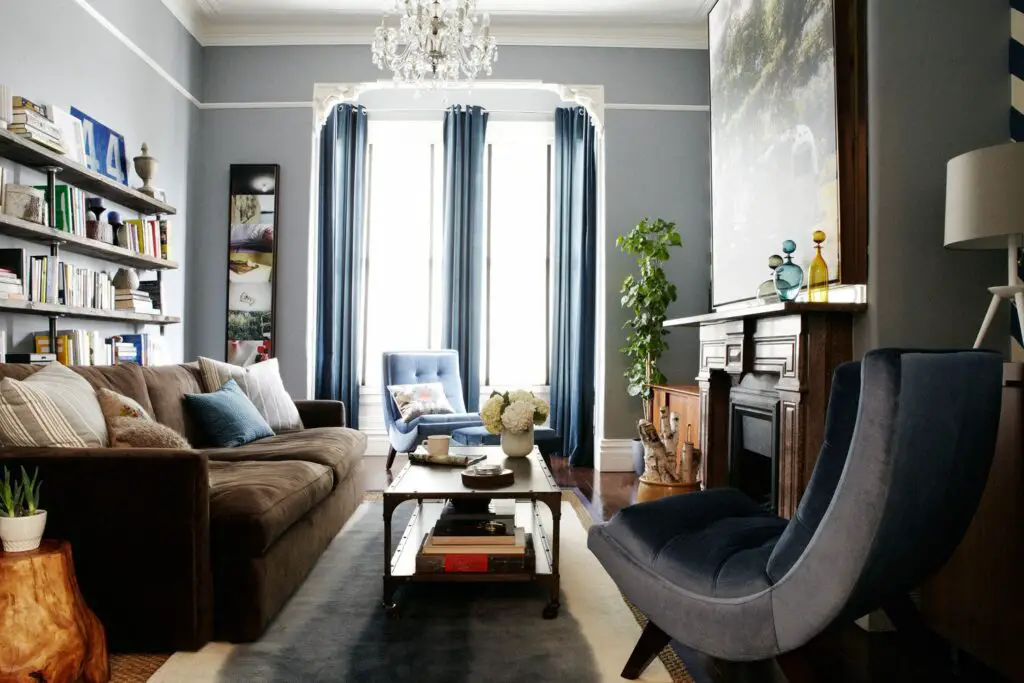
How do you paint a long narrow room?
The short explanation is that we can use colour to trick the brain into seeing a space as bigger than it is. By painting the longer walls in the room a slightly darker shade than the two shorter walls, it will make the room feel wider or more square. Paint the skirting and any radiators the same colour as the walls.
Before committing to a color, test paint samples on the walls. Lighting can significantly influence how a color appears in a room, so it’s crucial to observe the samples at different times of the day. Paint small swatches on different walls and observe how the colors look under natural and artificial light.
In a long narrow room, you may want to create an accent wall to add interest and depth. Choose one of the shorter walls to paint in a slightly deeper or more vibrant color than the rest of the room. This focal point can draw attention and visually break up the length of the room.
Before starting to paint, prepare the room by removing furniture or covering it with drop cloths. Remove any wall fixtures, outlet covers, and switch plates. Clean the walls thoroughly to ensure proper paint adhesion.
To add height and create a sense of verticality in the room, consider using vertical stripes on the walls. Vertical stripes draw the eyes upward, making the walls appear taller. Opt for subtle and light-colored stripes to maintain a balanced and visually pleasing look.
Start by painting the ceiling and trim before moving on to the walls. Use painter’s tape to protect the edges and ensure clean lines. A lighter color on the ceiling can make the room feel more open and spacious.
How do you split a long living room?
Avoid having all furniture along one wall.
This will make the narrowness of the room stand out. Instead, alternate the seating arrangements into separate groups facing opposite directions. Not only will this break up the eye line in a pleasing way, but it will create a curved traffic flow.
Strategically place furniture to act as dividers between the different zones. For example, position the back of a sofa to create a boundary between the seating area and the dining area. Bookshelves, cabinets, or room dividers can also serve as effective barriers to separate distinct areas.
Use area rugs or different flooring materials to delineate each functional zone visually. A large rug can anchor the seating area, while a different flooring material, like hardwood or tiles, can indicate the dining or workspace area. This creates a sense of definition and purpose for each zone.
Ensure that furniture pieces are placed with intention, and they cater to the specific activities of each zone. Arrange seating to face the focal points of the room, such as a fireplace or a TV for the entertainment zone, and consider the flow of traffic between the zones to maintain a smooth and comfortable transition.
Use lighting to enhance the ambiance and distinguish different zones. Incorporate various lighting sources, such as floor lamps, table lamps, and pendant lights, to create different moods in each area. Dimmers can also be helpful in adjusting the lighting according to the specific activity.
Consider using different paint colors or wallpapers for each zone to visually separate the areas. This can add interest and depth to the room while maintaining a cohesive overall design.
How do you arrange two sofas in a small living room?
2. L-shape. Arranging two sofas in a L-shape is another ideal setup for a small living room. This creates a nice flow from one sofa to the other, and can also create the illusion of having one of the best corner sofas in the room, if your two sofas are identical.
Start by measuring the dimensions of your living room, including the length, width, and any architectural features or obstacles, like windows, doors, or built-in shelving. Having accurate measurements will help you plan the furniture layout effectively.
Opt for sofas that are appropriately scaled for your small living room. Look for compact and space-saving designs that still provide comfortable seating. Avoid oversized or bulky sofas that can overpower the room.
One of the simplest ways to arrange two sofas in a small living room is to place them symmetrically facing each other. This arrangement creates a balanced and visually pleasing look. Position the sofas parallel to the longest wall to make the room feel more spacious.
If a symmetrical arrangement is not feasible due to room constraints, consider placing the two sofas in an “L” shape. Position one sofa along a wall, and then place the second sofa perpendicular to it, creating an “L” shape. This layout is ideal for conversational seating and can make the most of corner spaces.
In a small living room, you may want to “float” the sofas away from the walls. This approach can create a sense of openness and make the room feel less cramped. Leave some space between the sofas and the walls, allowing for better traffic flow and a more comfortable seating area.
Another option is to place the two sofas in a cozy corner of the room. Angle the sofas slightly towards each other, creating an intimate and inviting seating area. This setup can work well if your small living room has an unused corner that you want to transform into a focal point.
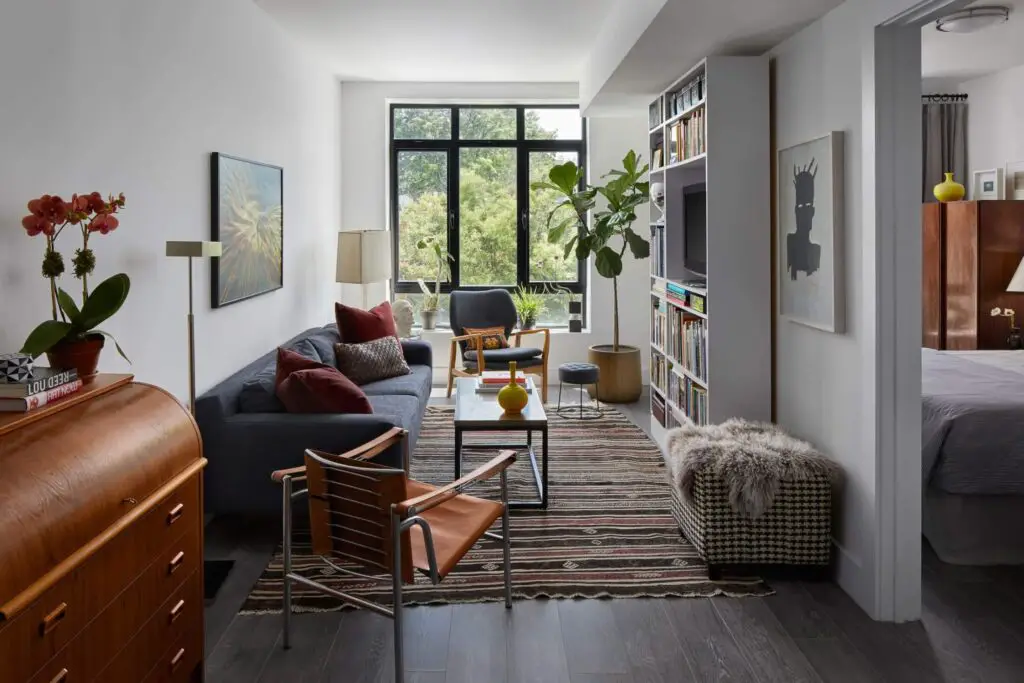
Conclusion
Start by defining different functional zones within the room and identify a focal point that can anchor the design. Utilize various layout options, such as the “floating” furniture arrangement, to create a sense of openness and flow. Placing the main seating area along one of the longer walls and incorporating traffic-friendly spacing ensures a comfortable environment for movement and interaction.
Rugs can play a crucial role in defining different zones and adding warmth to the room, while vertical space can be utilized to draw the eyes upward and create a feeling of height. Consider using multi-functional furniture to optimize space and cater to various needs. The goal is to create a space that feels welcoming, cohesive, and reflective of your lifestyle. With a bit of creativity and attention to detail, you can turn your long narrow living room into a harmonious and stylish narrow living haven that you’ll love to spend time in, whether entertaining guests or simply relaxing with your loved ones.
Incorporate a well-balanced mix of lighting options to set the right mood and ambiance. Personalize the space with decor elements that reflect your style and preferences, being cautious not to over-clutter the room. Remember that there’s no one-size-fits-all approach to arranging furniture in a long narrow living room. Be willing to experiment with different layouts and furniture placements until you find the perfect configuration that enhances both functionality and aesthetics.



